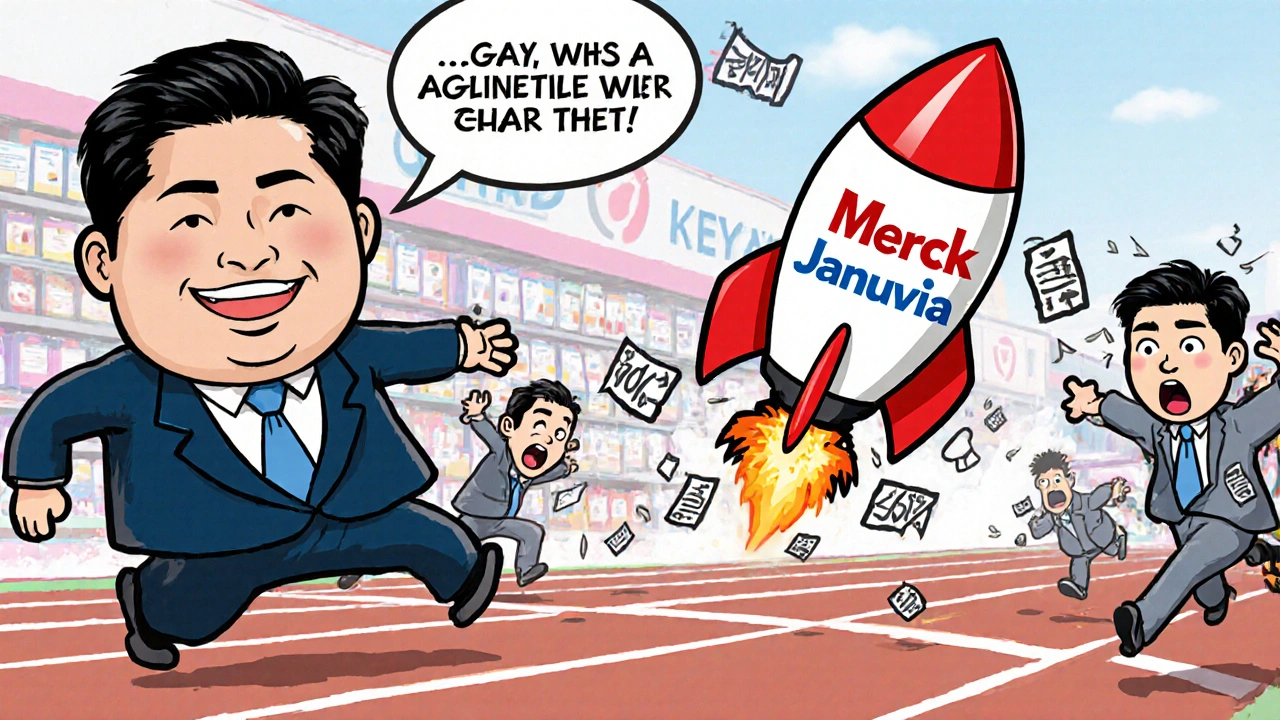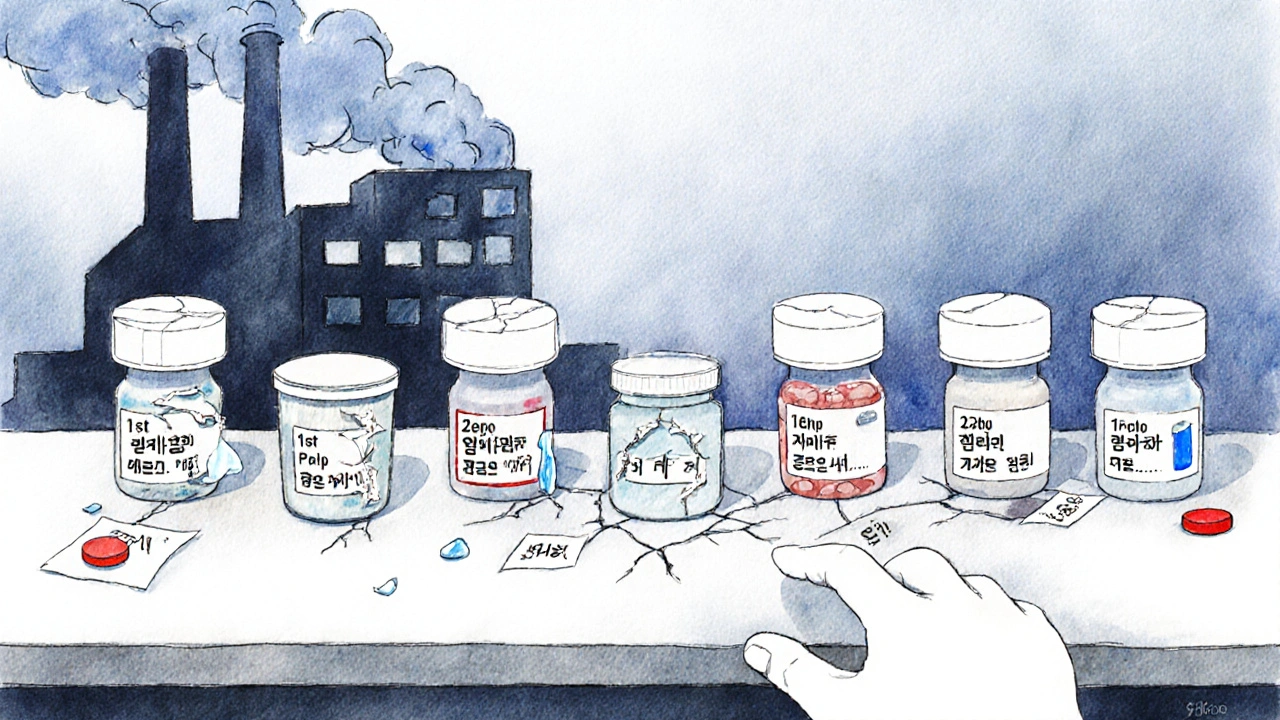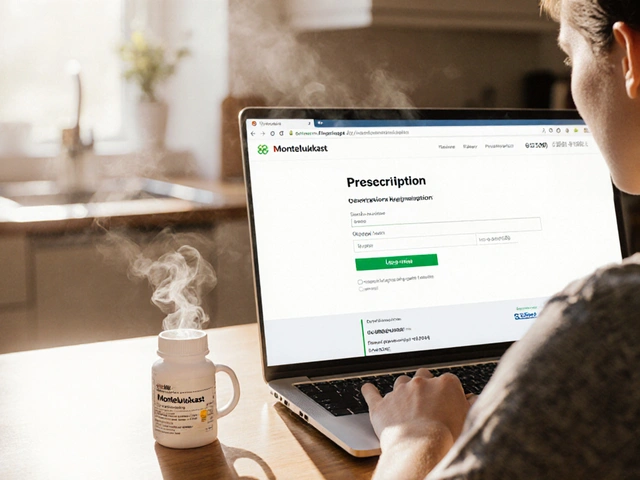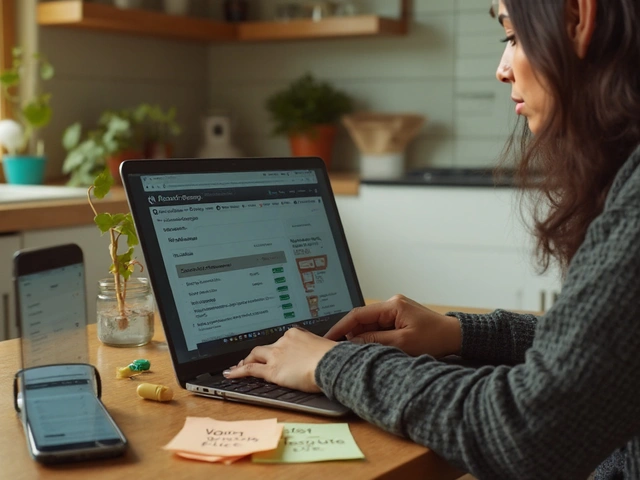
When a brand-name drug loses patent protection, it doesn’t just open the door for one generic competitor-it triggers a chain reaction. The first generic to enter the market gets a 180-day window of exclusive sales, but that’s just the beginning. After that, a flood of competitors rush in, and prices don’t just drop-they collapse. By the time five or more generics are on the shelf, the drug often costs just 17% of its original brand price. This isn’t random. It’s a carefully calculated, high-stakes race governed by law, money, and timing.
The 180-Day Window: Why the First Mover Wins Big
The first generic company to challenge a brand’s patent and win gets a legal shield: 180 days of exclusive rights to sell their version. During that time, they capture 70-80% of the market. Prices stay high-around 70-90% of the brand’s original cost. Why? Because no one else can legally sell yet. This isn’t just a reward; it’s a financial lifeline. Challenging a patent costs between $5 million and $10 million. That exclusivity period is how they pay it back. But here’s the catch: the clock doesn’t start when the FDA approves the drug. It starts when the generic is actually sold. Or when a court rules the patent is invalid. That’s why some companies delay their launch, waiting for the perfect moment. Others get stuck in legal limbo, hoping to avoid a lawsuit from the brand.Who Comes Next? The Second, Third, and Beyond
As soon as that 180-day window closes, the floodgates open. The second generic enters. Prices drop to 66% of the brand price. The third? Down to 49%. By the fifth, you’re at 17%. The biggest plunge? Between the second and third entrants. That’s when the market flips from a premium product to a commodity. These later entrants don’t have to pay for the patent fight. They can piggyback on the first generic’s bioequivalence studies. That cuts their development costs by 30-40%. But they face new hurdles. They need to prove they can make the drug consistently. They need to get their product into pharmacies. And they need to beat out other generics who are doing the exact same thing.Authorized Generics: The Brand’s Secret Weapon
Here’s where it gets tricky. The brand company doesn’t just sit back. Many launch their own version of the generic-called an authorized generic-right when the first generic hits the market. Merck did this with Januvia in 2019. On the exact day the first generic appeared, Merck’s own generic version rolled out under a different label. Within six months, it grabbed 32% of the market. This isn’t cheating. It’s legal. And it’s common. In fact, 65% of big-brand drugs launch authorized generics during the first generic’s exclusivity period. The result? The first generic’s market share drops from 80% to 40-50%. Revenue plummets. Suddenly, that $10 million lawsuit doesn’t look so smart.
Why Price Drops So Fast-And Why It’s Not Always Good
Each new generic pushes prices down another 10-15%. But the math doesn’t always add up. When prices crash too hard, manufacturers can’t make money. And if they can’t make money, they stop making the drug. That’s why 62% of generic shortages happen in markets with three or more competitors. The problem? Most later entrants don’t own their own factories. They outsource production to contract manufacturers. One quality issue at a shared plant can knock out half the supply. In 2022, the FDA reported that 78% of second-and-later generic makers relied on these contract manufacturers, compared to just 45% of the first entrant. And it’s not just about production. PBMs (pharmacy benefit managers) now use “winner-take-all” contracts. They give 100% of the formulary space to the lowest bidder. So even if you’re the third generic approved, if you don’t offer the lowest price, you get nothing. That forces companies into a race to the bottom-and sometimes, out of business.Patent Settlements and Staggered Entry: The Quiet Game
You’d think the system is chaotic. But it’s not. Behind the scenes, brand companies and generic makers often make deals. In 2022, there were 147 patent settlement agreements. Sixty-five percent of them included staggered entry dates. Take Humira. Six biosimilar makers agreed to enter the market between 2023 and 2025, not all at once. That keeps prices from crashing too fast. It protects the brand’s revenue. It gives each generic a fair shot. It’s not perfect, but it’s a workaround to the chaos. These deals are controversial. Critics say they delay competition. Supporters say they prevent market collapse. Either way, they’re now standard practice in high-value drug markets.
Complex Generics vs. Simple Ones: Not All Drugs Are Equal
Not every generic follows the same pattern. Simple pills like rosuvastatin (Crestor) can be made by dozens of companies. Once five or more enter, the price hits 10-15% of the brand. But complex drugs? Things like inhalers, injectables, or topical creams? Those are harder to copy. Only two or three companies can make them. Prices stay higher-30-40% of the brand price. That’s because the manufacturing is more technical. The FDA requires more testing. And fewer players can meet the standards. Oncology drugs? Even slower to erode. Because of handling requirements, storage needs, and specialized distribution, prices stabilize at 35-40%. There’s no race to the bottom here. Just slow, steady competition.The Bigger Picture: Consolidation and Shortages
The market is shrinking. In 2018, there were 142 companies holding generic drug approvals. By 2022, that number dropped to 97. Why? Because the low prices make it hard to survive. Companies that can’t compete on cost exit. Others get bought up. And shortages? They’re getting worse. In 2022, 37% of generic markets with multiple competitors had a shortage within 18 months. That’s nearly five times higher than during the first generic’s exclusivity period. The problem isn’t lack of demand. It’s lack of profit. When a company can’t make money on a drug, they stop making it. And no one else steps in fast enough.What’s Next? The Future of Generic Competition
By 2027, experts predict 70% of simple generic markets will have five or more competitors. Prices will hit 10-15% of the brand. But complex generics? They’ll stay at 2-3 competitors, with prices at 30-40%. And authorized generics? They’ll be on half of the top-selling drugs. The real question isn’t how many generics enter. It’s whether the system can survive the price collapse. Some experts, like Dr. Aaron Kesselheim, argue that too many companies chase too few profits-and that leads to shortages. Others, like former FDA Commissioner Dr. Scott Gottlieb, say we need market-based fixes: long-term contracts, restricted entry, or even price floors. Right now, the system works-but barely. The first generic wins big. The rest fight for scraps. And patients? They get cheaper drugs. But sometimes, they get none at all.13 Comments
Write a comment
More Articles

How to Buy Cheap Generic Singulair Online Safely in the UK
Learn how to safely buy cheap generic Singulair (montelukast) online in the UK, verify legit pharmacies, compare prices, and avoid counterfeit risks.


David Cunningham
November 23, 2025 AT 09:35This is wild how the first generic gets to ride shotgun while everyone else fights over crumbs. I knew prices dropped but didn't realize it was this brutal after the third player shows up.